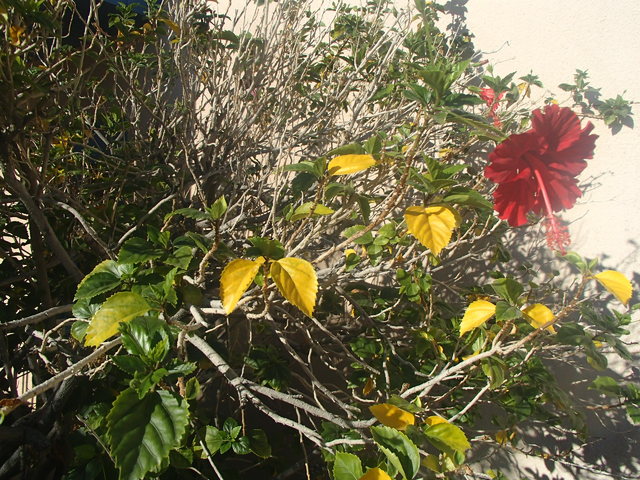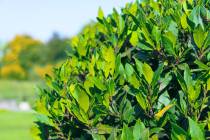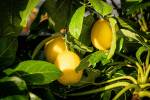It’s not too late to fertilize fruit trees
Q: Is it too late to fertilize my nectarine tree with buds starting to form? Fertilizer instructions advise to apply it in early February before buds appear.
A: No, it is not too late to fertilize fruit trees now. The best time is late winter around mid-January, two to three weeks before new growth begins. The fertilizer bag is telling you the best time for an application, not the only time.
The concept is to have the fertilizer in place so the tree can use it when needed during spring growth. If you miss this deadline, it is not a big deal if you apply the fertilizer within a couple of weeks after new growth begins.
This fertilizer does not need to be a mineral fertilizer. Compost applications around the base of the tree are more gentle, release nutrients more slowly and improve the soil, which mineral fertilizers do not. This is particularly important in desert soils. Use quality, 100 percent compost, not a soil mix.
When fruit trees produce fruit early, having the fertilizer available in late spring and early summer when the fruit is enlarging is desirable. When fruit trees produce fruit later in the season, split a single application into two half applications: half now and the other half later when fruit is quickly getting larger.
Fruit trees do not need fertilizer applied later in the season when growth has stopped and the fruit has been picked.
Don’t forget to apply iron fertilizers to the soil during early spring if plants were yellowing last growing season. If you miss this window for a soil application of iron, apply liquid iron solutions to the leaves later in the season.
Q: May I get information regarding the care of Italian cypress and hibiscus?
A: Italian cypress care is easy to explain, because it is just one type of plant. Hibiscus is more complicated, because it depends on which hibiscus. There are numerous kinds with very different requirements when compared to Italian cypress.
Italian cypress is a Mediterranean plant. It comes from a climate that is cool to cold and wet in the winter and hot and dry in the summer. Think of countries with land surrounding the Mediterranean Sea.
Following this lead, water it only occasionally during the summer. When watering it, give it lots at one time. Then withhold water until the next irrigation. Water it less often than fruit trees but more often than cactus.
Put four to six drip emitters on this plant and water for one to two hours. The length of time depends on how fast the water is applied, but water long enough so the soil is wet to a depth of 18 to 24 inches all around the base of the plant. How often might be once a week, perhaps twice but not more often than this if watering deeply.
Apply fertilizers in late winter or early spring just before new growth. After strong winds or if the plant becomes dusty, rinse the foliage with water to wash off the dust and help prevent infestations from spider mites.
If its new growth is “loppy,” reduce the amount of fertilizer applied and how often the tree is watered but not the amount of applied water.
Hibiscus care is very different. The name “hibiscus” refers to a much wider range of plants than Italian cypress. Some varieties require less care than others. Some are winter tender, while others are cold hardy.
Hibiscus are less tolerant of desert soils than Italian cypress and benefit from frequent applications of water. The different types of hibiscus are watered and fertilized similarly. The different types of hibiscus vary in their tolerance to winter and summer weather. Some freeze every winter, and others do not.
Water hibiscus more frequently than Italian cypress, because they are less tolerant of dry soils. They will require water at least three times a week during mid-summer.
Apply fertilizer just before new growth in the spring. They benefit from frequent applications of fertilizer but applied in smaller amounts. The reason for this is because of their flowering.
Hibiscus benefit from soil improvement at the time of planting and growing them in soils with the surface covered in a layer of wood mulch that decomposes easily. Fertilize these plants at least four times during the growing season.
If they are winter tender, do not apply fertilizer high in nitrogen after Aug. 1. If this is a special hibiscus, consider using a liquid fertilizer applied to the leaves every six to eight weeks. Hibiscus do not have many plant pests in our climate; aphids in the spring and whiteflies during the summer can be a problem.
Q: A recent R-J article about yellow bells (Tecoma stans) advised the correct pruning for height control is from the bottom, not the top of the plant. Please clarify the difference between top and bottom pruning.
A: Pruning at the bottom of the plant for height control means making the pruning cuts at the bottom of the plant, removing the tallest stems a few inches above the soil. Pruning at the top of the plant means making the pruning cuts near the top of the plant near some desirable height.
Using these two different methods of pruning results in a very different plant years later. Making cuts continuously near the top results in larger and larger stems with fewer and fewer leaves near the top. Pruning at the bottom keeps the plant eternally young.
Pruning at the top of the plant is like giving the plant a butch haircut and requires no knowledge of how plants grow. Cutting at the bottom of the plant removes the largest and oldest stems, removing about ¼ of the entire plant in a few single cuts.
Cutting at the bottom renews the plant with new growth from the base. Cutting at the top causes no renewal from the base but instead results in all the new growth growing from just below the cuts at the top.
Q: My neighbor has a pine tree with limbs that cross our fence. These limbs deprive my orange tree of sunlight at certain times of the year. Real estate law allows me to trim the branches along the property line. If these limbs are trimmed, will it kill the rest of the branch or damage the tree in any other way?
A: If the pruning is done correctly, it will not kill the rest of the branch or damage the tree. If the cut is done incorrectly, the limb may become infected, the limb may die back a considerable distance or the portion of the limb that dies could eventually fall from the tree and cause damage.
The correct way to prune this branch is to cut it immediately to the outside of a major side branch. An alternative method is to remove this offending branch from the tree at the trunk. It may also be possible to selectively remove a few entire branches from the tree, back to the trunk, thus allowing more light to reach your orange tree.
The decision you make to correct this problem will be based more on the resulting aesthetics rather than the health of the tree if these pruning cuts are done correctly. Make sure all pruning equipment has been properly sanitized and sharpened prior to making the cuts.
If a branch is cut along the limb at a place where there is no side branch, this branch will die back to the nearest side branch. This type of cut may make the tree unsightly, open the limb to possible infections or cause die back that could result in future damage.
Bob Morris is a horticulture expert living in Las Vegas and professor emeritus for the University of Nevada. Visit his blog at xtremehorticulture.blogspot.com. Send questions to Extremehort@aol.com.


























